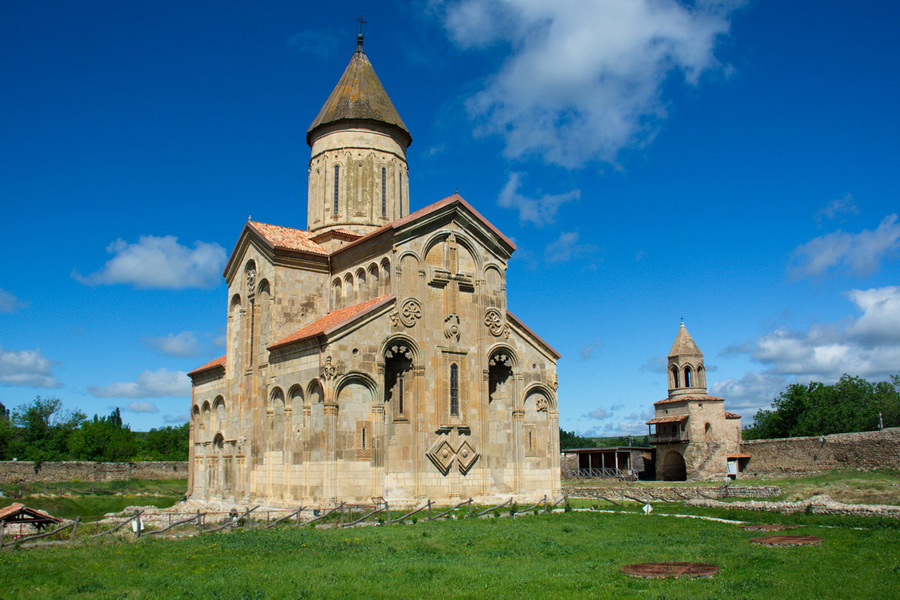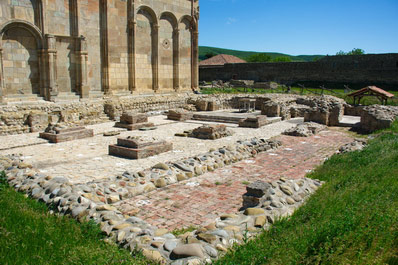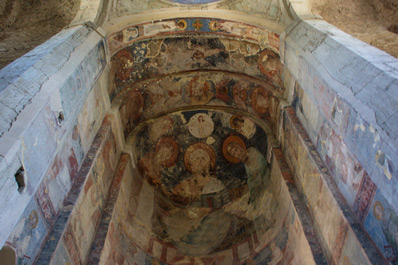Samtavisi Cathedral, vicinity of Gori

Samtavisi stands as a striking example of medieval Georgian temple architecture. Located just a stone's throw away from the city of Gori, it frequently attracts tourists eager to admire classic Georgian church architecture. The cathedral's main attraction and distinctive feature lie in its decorative embellishments on the façade. The eastern wall of the cathedral is adorned with original ornaments that give the church a stately and majestic appearance. At the top of the eastern façade, there's a huge carved cross. Below it is a narrow, tall window framed by various patterns, and just beneath, two multi-layered, massive diamonds. Additionally, under the right arch, a detailed bas-relief featuring a griffin has been preserved.
The first Samtavisi temple was presumably built in the 5th century during the reign of King Vakhtang Gorgasali. In the 6th century, one of the founders of Georgian monasticism, Isidore of Samtavisi, established a male monastery here.
Later, in 1030, a new cathedral was built on the same site, with the construction led by the architect Hilarion Samtavnelli. The cathedral has undergone several restorations, for example, in the 15th century, the western wall and the dome part were rebuilt after a collapse. At the same time as the dome was repaired, slight changes were made to the details of the temple's external decor. Currently, on the premises of Samtavisi, one can see an 18th-century bell tower attached to the gatehouse part of the cathedral. Inside the church, fragments of 17th-century frescoes have been preserved.
The cathedral's grounds also house a cemetery. There are graves inside the church as well. Here lies Saint Isidore of Samtavisi, canonized by the Georgian Orthodox Church. The grave of the holy monk and his relics are located in the left aisle of the church—below floor level, under glass.
The cathedral is easily visible from the road from Tbilisi to Gori, so travelers won't have any trouble finding it.


